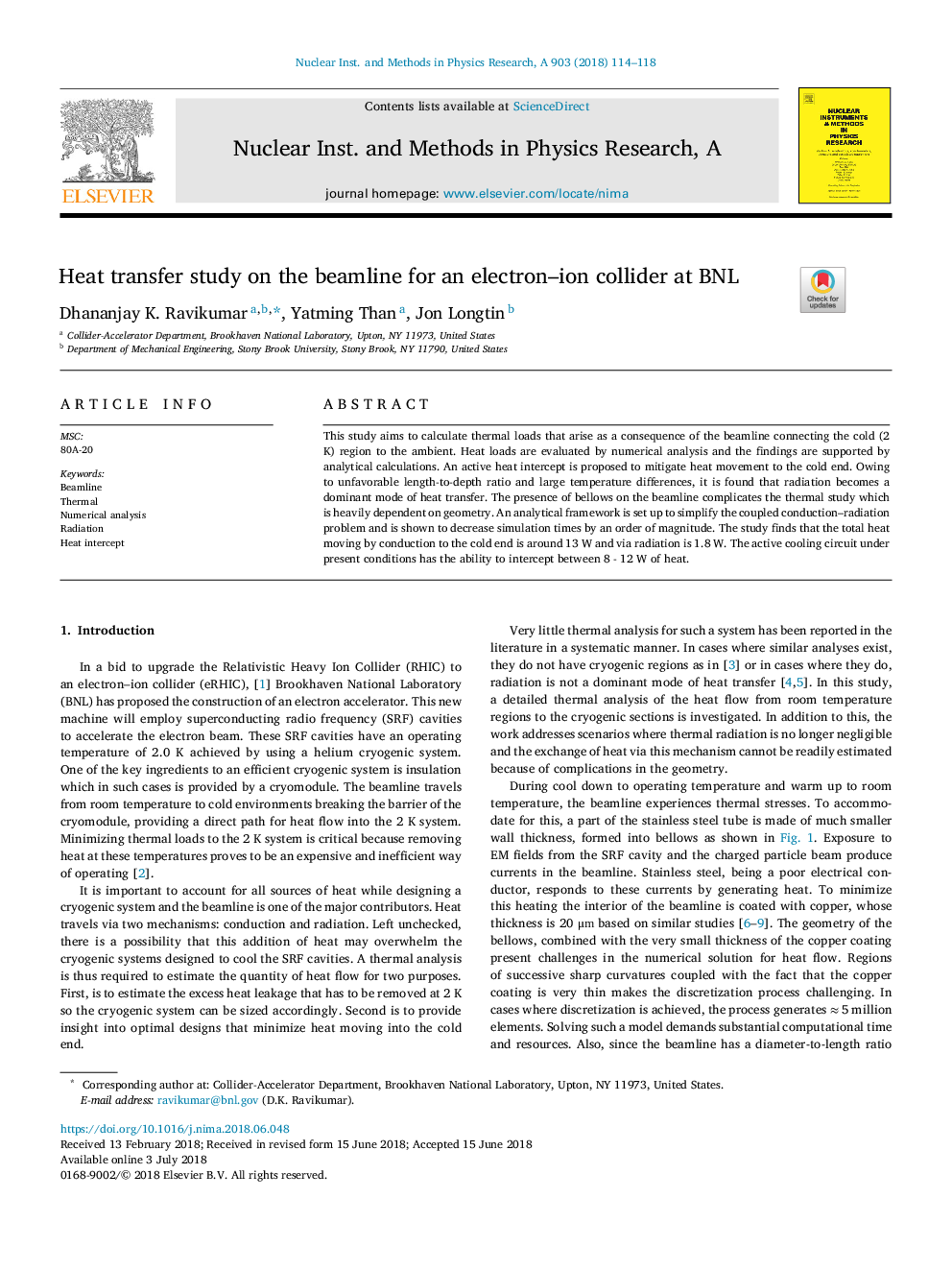| Article ID | Journal | Published Year | Pages | File Type |
|---|---|---|---|---|
| 8165935 | Nuclear Instruments and Methods in Physics Research Section A: Accelerators, Spectrometers, Detectors and Associated Equipment | 2018 | 5 Pages |
Abstract
This study aims to calculate thermal loads that arise as a consequence of the beamline connecting the cold (2 K) region to the ambient. Heat loads are evaluated by numerical analysis and the findings are supported by analytical calculations. An active heat intercept is proposed to mitigate heat movement to the cold end. Owing to unfavorable length-to-depth ratio and large temperature differences, it is found that radiation becomes a dominant mode of heat transfer. The presence of bellows on the beamline complicates the thermal study which is heavily dependent on geometry. An analytical framework is set up to simplify the coupled conduction-radiation problem and is shown to decrease simulation times by an order of magnitude. The study finds that the total heat moving by conduction to the cold end is around 13 W and via radiation is 1.8 W. The active cooling circuit under present conditions has the ability to intercept between 8 - 12 W of heat.
Related Topics
Physical Sciences and Engineering
Physics and Astronomy
Instrumentation
Authors
Dhananjay K. Ravikumar, Yatming Than, Jon Longtin,
